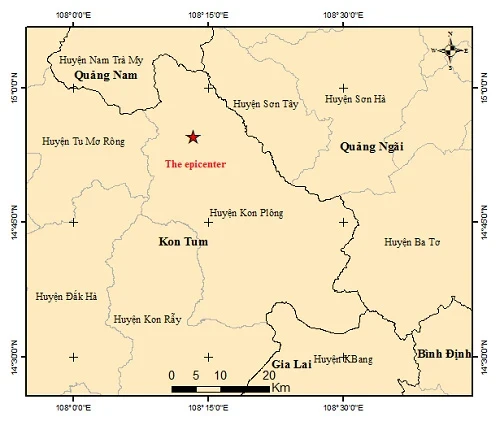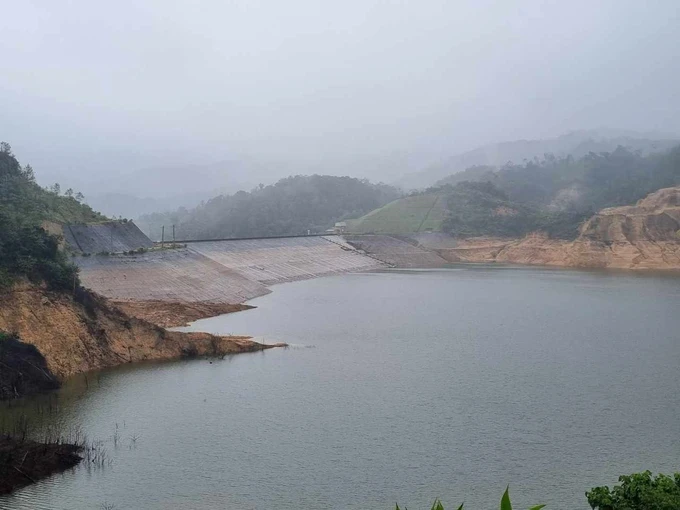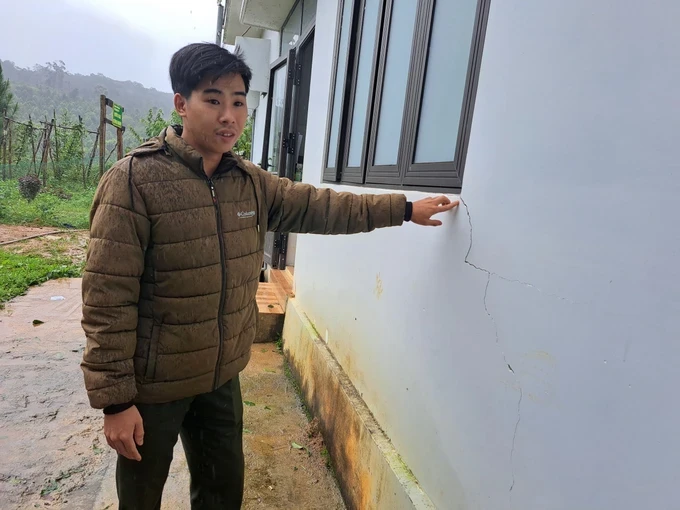
Since 2021, Kon Plong District has continuously witnessed earthquakes. Between July 28 and 29 alone, 44 earthquakes were recorded in the district. The most significant one, with a magnitude of 5.0 on the Richter scale, occurred in the afternoon of July 28, causing a level 2 natural disaster. This earthquake resulted in cracks in schools, health facilities, and government offices, causing significant anxiety among local residents.
Head of the Geophysics Institute Dr Nguyen Xuan Anh commented that the series of earthquakes in Kon Plong and the Central Highlands region over the past two days are induced earthquakes, not natural ones. The intensity of the former cannot exceed that of the latter, with the estimated maximum magnitude being around 5.5 on the Richter scale.
Concurring with that, Assoc Prof Dr Nguyen Hong Phuong, former Deputy Director of the Earthquake Information and Tsunami Warning Center informed that the Northern region, particularly the Northwest, is prone to more intense natural earthquakes due to geological faults. However, the earthquakes in the Central Highlands and South Central Coast regions are primarily induced, caused by human activities such as hydropower dam construction.

As to the series of induced earthquakes for the past two days, Dr Xuan Anh further explained that the series of induced earthquakes in Kon Plong could continue for up to 10 years after the completion of a hydropower dam. While predicting the exact end of this seismic activity is challenging, induced seismicity due to hydropower dam construction is a common phenomenon worldwide. Not only in Kon Plong but also in the Da River region, hydropower dams have triggered induced earthquakes.
As the times for earthquakes to happen near hydropower lakes are different, the Geophysics Institute is running 11 monitoring stations to track earthquake statuses in the Central Highlands and South Central regions to timely deliver necessary warnings.
Assoc Prof Dr Nguyen Hong Phuong stressed that since earthquakes are unpredictable in terms of timing, and thus Vietnam, like other countries in the world, is shifting its focus from earthquake prediction to response .
On July 29, the People's Committee of Kon Tum Province issued a directive instructing the Kon Plong District People's Committee to strengthen local response forces to assist residents in case of earthquakes. The directive also required the owners of three large hydropower plants in the area to assess the impact of earthquakes on their reservoirs and to review their emergency response procedures.
Simultaneously, the Office of the Kon Tum Provincial Steering Committee for Disaster Prevention and Control is working with relevant state agencies to assess the damage caused by the latest earthquakes, along with carefully investigating the relationship between the seismic activity and the water levels in the hydropower reservoirs.

According to Vice Chairman Le Duc Tin of the Kon Plong District People's Committee, the district has distributed manuals to guide residents on earthquake preparedness. A district-wide earthquake drill is scheduled for August.
Director Le Nhu Nhat of the Kon Tum Province Department of Industry and Trade stated that there are three hydropower plants in Kon Plong District with a reservoir capacity of over 10 million cubic meters: Upper Kon Tum, Dak Drinh, and Dak Re.
To prevent these plants from releasing excessive water downstream due to fears of earthquakes, the department has instructed them to adhere strictly to reservoir operation procedures. Inspections have confirmed that all three hydropower plants are complying with these procedures, and their water levels are well below normal operating levels.
In related news, on July 29, Deputy Prime Minister Tran Luu Quang signed formal Dispatch No.73/CD-TTg 4 about inspecting and addressing negative influences of the recent earthquakes in Kon Plong District of Kon Tum Province.
The Prime Minister has requested that the People's Committee of Kon Tum Province and other local authorities promptly disseminate information about the earthquakes and aftershocks, provide guidance on emergency response, and stabilize public sentiment, especially among ethnic minority communities. Relevant state agencies and local governments have been tasked with assessing the damage caused by the earthquakes to residential and infrastructure. Rescue and recovery efforts are to be carried out promptly to ensure the safety of residents.
The three ministries of Agriculture and Rural Development, Industry and Trade, and Transport have been assigned to inspect and address any damage to dams, reservoirs, and transportation infrastructure, particularly those located near the earthquake epicenter. The two ministries of Defense and Public Security have been instructed to deploy forces and equipment to assist local authorities in recovery efforts.
The Vietnam Academy of Science and Technology has directed the Geophysics Institute to continue monitoring the earthquakes and aftershocks. The academy, in collaboration with other agencies, will investigate the cause of the increased seismic activity and provide timely information to the public and relevant authorities to prevent the spread of misinformation and maintain public order.
























